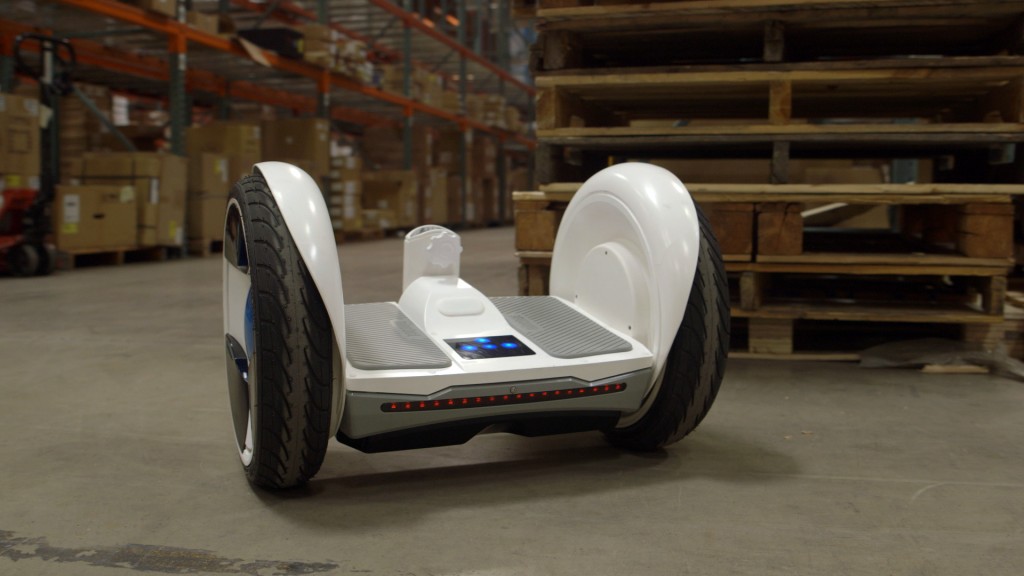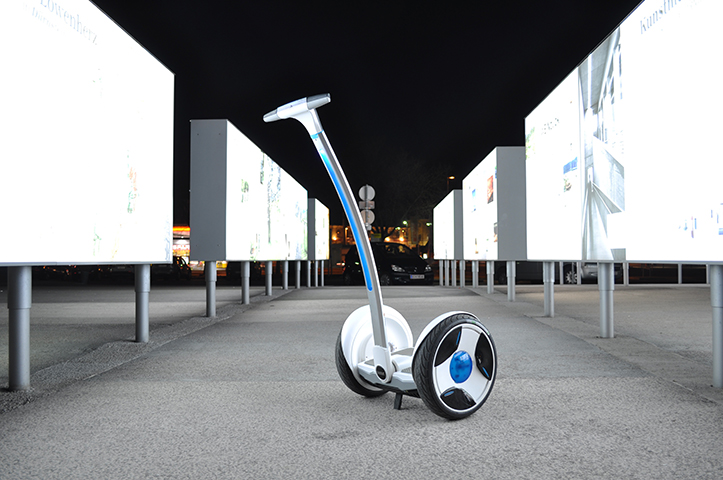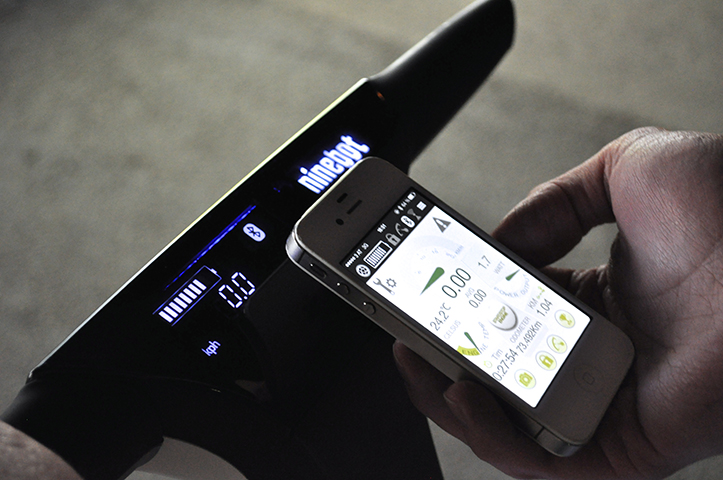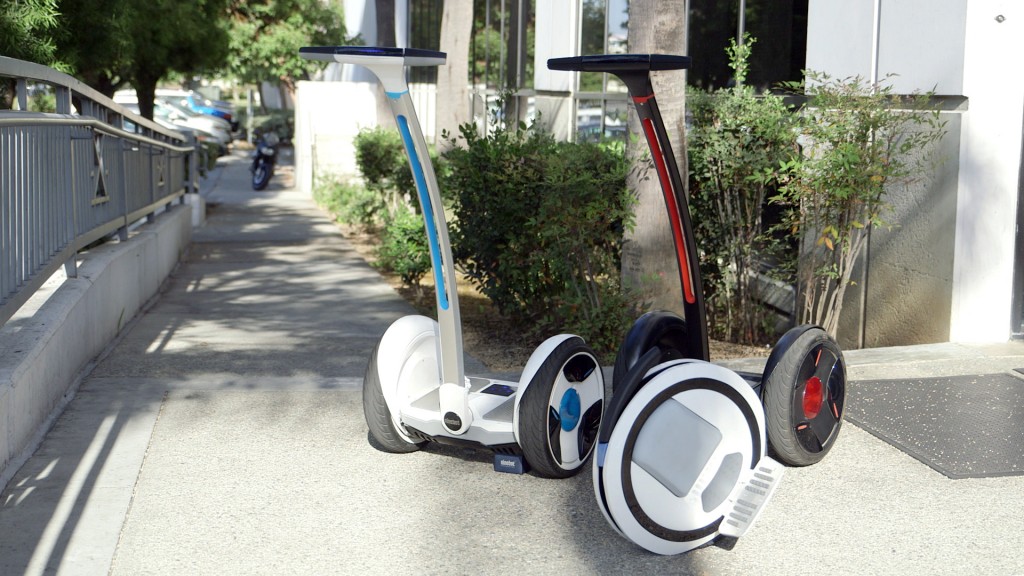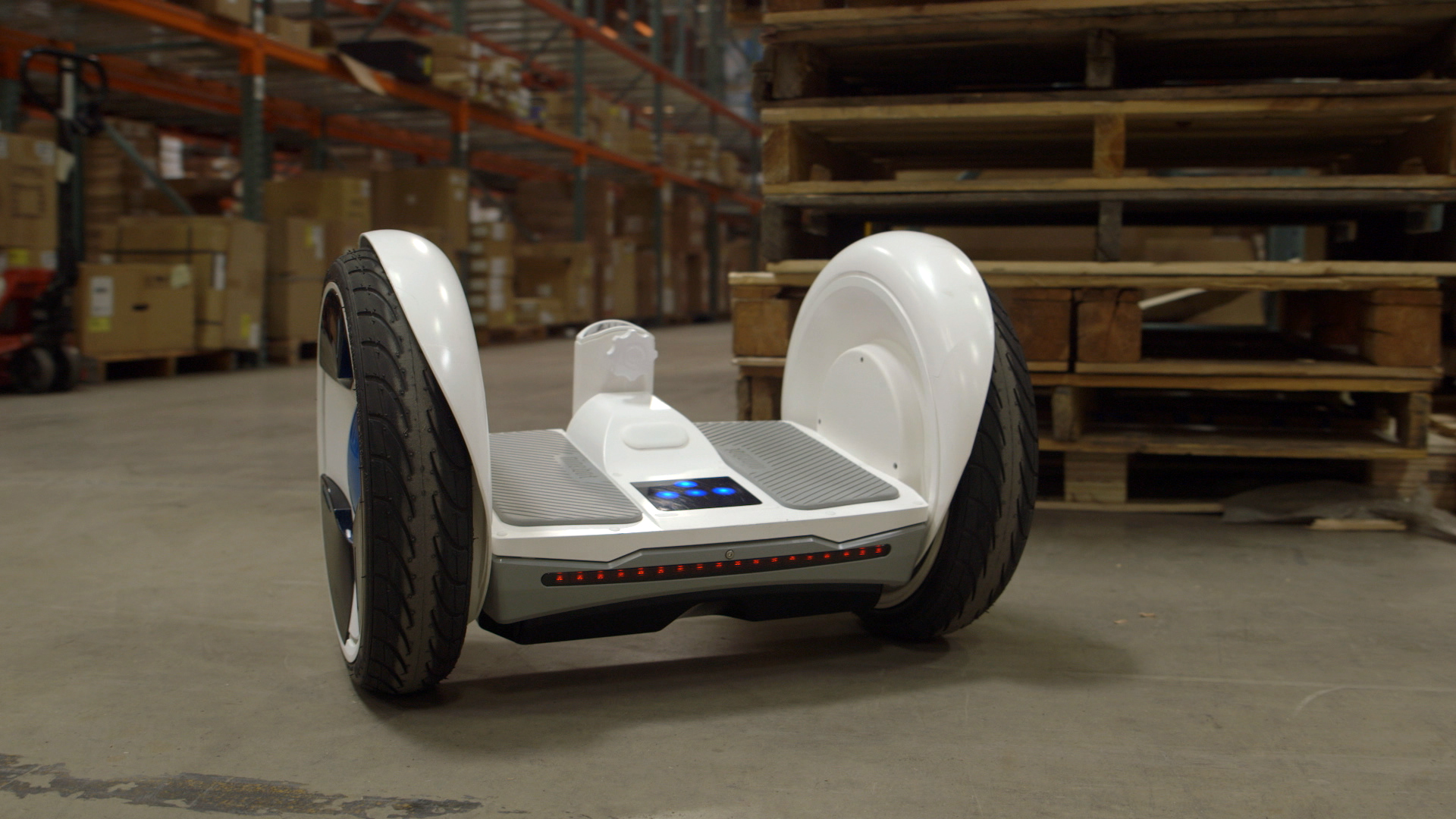
Until recently, Segway was the main player in the personal transportation robot industry, but that all changed when Ninebot hit the scene. Ninebot pioneered a new way to approach the demand for progressive commuting, melding super-intuitive design with strong technical execution. It is this forward-thinking mentality that led them to acquire Segway in April. It was a move that further solidified them as a global leading supplier of personal electric transportation.
So what makes Ninebot so cool? It all starts from their mission of making a product that is practical and fun to ride. The goal was to have something to replace a car for commuters in urban areas they would actually want to ride. Their transportation robots are sleek and fully digital. Their Ninebot-E is powered by twin brushless 1350W motors capable of 12 mph with a 12-mile travel range on one charge. Plenty far. One of the most interesting tech features on this machine is the Bluetooth app, where you can access comprehensive dashboard, remote control function, and online diagnosis of issues.
I got a chance to play around with Ninebot-E, and it was an awesome experience. First, it is easy to ride, which was great because I didn’t want a long learning curve. The response from the handlebar during turns and navigating obstacles was incredibly crisp. I was surprised at how quickly I could go from a standstill to full speed and back to full stop. Only minor movements were needed to adjust course or speed, and the stability was never compromised during the two days I rode it, both on and off pavement.
The stability of the vehicle is maintained thanks to the multiple gyroscopes that sense your position—recalculating balance up to 500 times per minute. This constant reporting allows the Ninebot-E to note any changes and respond immediately. The balancing system itself is based on the US military’s unmanned aerial vehicle (UAV) technology. That definitely adds to the cool factor of this thing in my opinion. An awesome feature is the redundant electronic control, which switches to a backup system automatically in case of component failure. This ensures you won’t get stranded on your way to work due to any system failure, which is something I’d like to avoid.
This unit was designed to be a practical zero-emissions short distance vehicle, and at only 52 lbs. all in all it really hits the mark. Despite the light weight of the unit, the magnesium alloy skeleton can support up to 250 lbs and still zip along quite nimbly. Ninebot offers a more basic model without the Bluetooth connectivity and handlebars known as the Ninebot-C. They also have the Ninebot One which is a unicycle model for the more coordinated and daring among us.
While I only gave the elite model a trial run, I can definitely picture any of these devices replacing regular transportation for tons of short-distance commuters living in urban areas. And picture this, if you live within 12 miles of your workplace you can ride the maximum distance, and then recharge while you are at work for the ride back without sitting in traffic or spending anything on gas. Not to mention there is something exciting about feeling the wind in your face as you whip down the road.
Ninebot has a market for those who love new technology and for people becoming more environmentally conscious or looking for a better way commute. With plans for more consumer-driven advances on the horizon, I guarantee you will be hearing more about this company soon.
Where would you go with your Ninebot?

